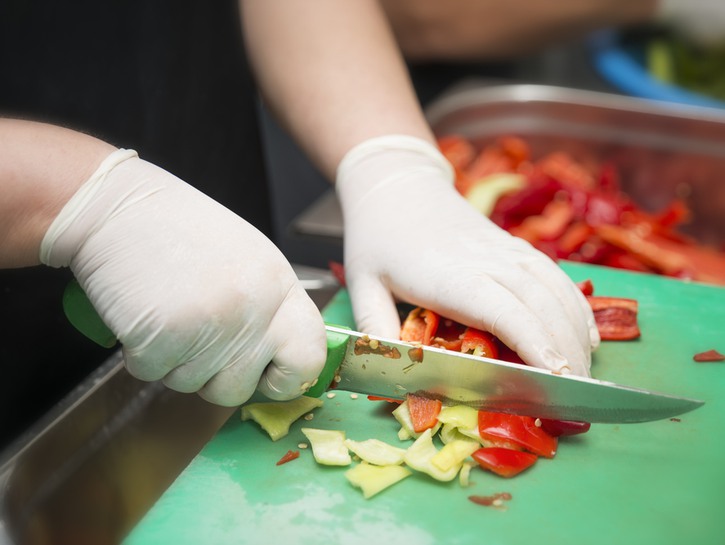It gives you may feel a sense of security when you see cooks with gloves on; your food won’t be contaminated or have any bacteria on it. You may feel better thinking that gloves are the safest route, but we’ve got news for you. Service workers preparing food with gloves on is actually a much germier practice than once thought.
Should Cooks Wear Gloves?

Putting on a pair of ill-fitted gloves does more damage to food than you’d think. Besides the probable chance of bacteria spreading, cross-contamination and lower hand-washing rates are also plausible. Wearing gloves has been common practice for years, but here are a few reasons why it might be time to re-evaluate.
The Wrong Glove Spreads Germs
Loose-fitting gloves not only make it harder to work with food, but they can also easily spread germs to your dinners. A 2004 study by Food Safety Magazine revealed all the ways food can suffer at the hands of bad gloves:
- Latex gloves have chemicals that can spread to meals.
- Loose-fitting gloves increase the chance of microbial contamination.
- Weak gloves can stretch and tear, causing germs, sweat, and bacteria to latch onto food from a chef’s hand. Studies have shown that workers fail to notice punctures or tears in their gloves 50 percent of the time.
- Some cooks may be using single-use gloves for more than one job, causing cross-contamination of foods.

Initial reported facts of a similar nature. One study, in particular, focused on the microbial failure rates of surfaces that came in contact with hands, without washing, right before handling ready-to-eat food. The study revealed how containers touched by hands 23 percent of the time had an 84 percent microbiological failure rate. Trash bin lids touched by hands just four percent of the time had a 100 percent failure rate.
What this means is that when food service workers came into contact with containers and trash bin lids, they failed 84 percent and 100 percent of the time, respectively, to not spread contaminants to food.
False Sense Of Security
It’s a nice thought that gloves protect food from a hand’s bacteria, but that’s not entirely accurate. In fact, a study published in 2007 discovered that food service workers washed their hands less frequently when using gloves. “Hand washing and glove use were related to each other—appropriate hand washing was less likely to occur with activities in which gloves were worn than with activities in which gloves were not worn. These results suggest that workers who wear gloves do not remove them and wash their hands as they should,” the study said.
The same research also concluded that “these findings, along with evidence that poor personal hygiene frequently contributes to foodborne-illness outbreaks, indicate that improvement of food workers’ hygiene practices is needed.”
Proper Hygiene Methods

The good news is that you can familiarize yourself with health regulations. The more you know, the more prepared you’ll be the next time you order out. According to the FDA, the most important rules food workers should follow are:
- Washing your hands before making food.
- Putting on gloves when making food.
- Washing your hands after eating, drinking, smoking, sneezing, and preparing raw animal products.
It’s also not a regulation in all states to prepare ready-to-eat food with gloves on. For example, Oregon was meant to pass a law stating all food service workers should wear gloves but ultimately decided against it. A 2016 study proved that only 40 states include a law stating food service workers need to wash their hand before putting gloves on.
Final Notes
Food service workers have wrapped their hands in gloves for years; it was thought the procedure made things safer, but research suggests otherwise. Workers often miss punctures or tears in their gloves, which causes cross-contamination and bacteria to spread. Learn more about your state’s laws on food service workers so you can ensure you’re getting the cleanest meal.
